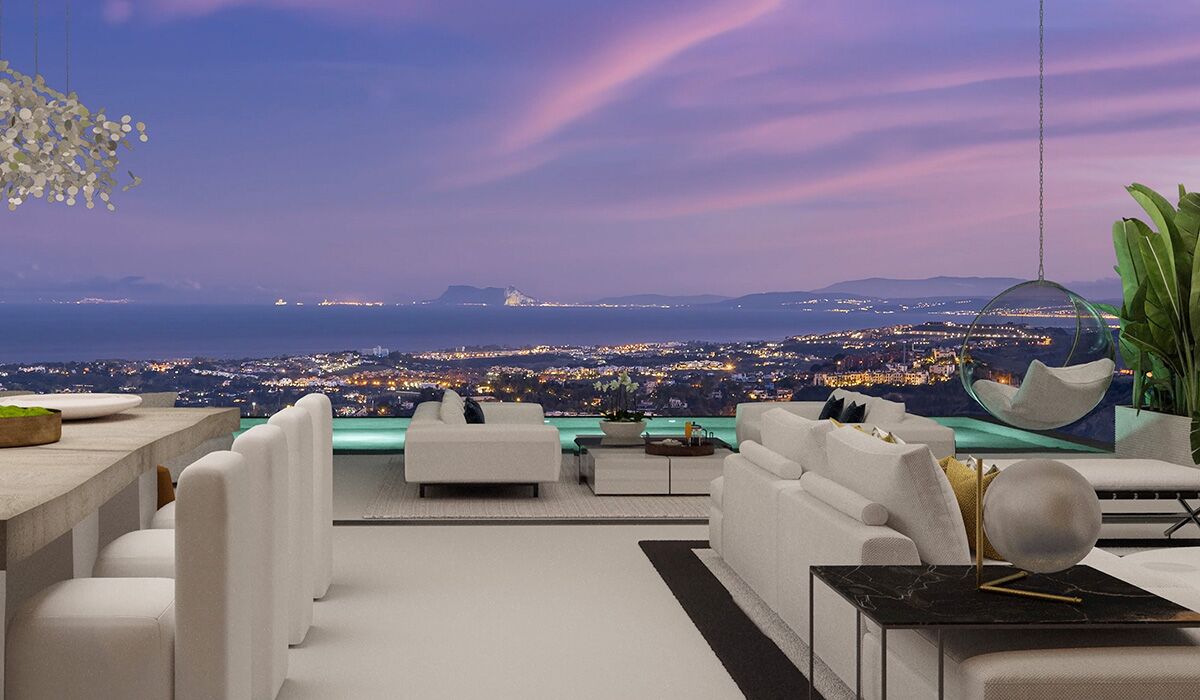
Climate, tradition, lifestyle and immediate surroundings define great architectural design, especially with regard to domestic architecture.
Article by Vivion Okelly
Stand almost anywhere in Spain, look at the houses around you and you can tell which region you’re in. That is, if you have some little knowledge of the varying styles of domestic architecture around this country. Extend the test to Europe as a whole and the same thing more or less applies as the climate and way of life changes on its way north. Magnificent public buildings may have been, and still are being, designed for religious or political purposes, and may not tell us much about place, but the houses people live in have always been designed to suit them and their own way of life, wherever they are.
Climate & Design
Climate is the most important factor in house design, although lifestyle, tradition and availability of materials also plays a lesser – and perhaps decreasing – part in more modern buildings. The design of the villas at Vista Lago Residences, for example, in the hills overlooking Marbella, owes more to lifestyle and place (read climate), and exact plot position, than to traditional architectural design or the materials used to build them.
There are no set rules to house design, of course, but to ignore them would be a mistake. Decades ago in Britain, when mass holiday travel to Spain first became fashionable, many sea-front houses were built in the so-called Hacienda Style, which would be more accurately described as the Cortijo Style. And there they still stand, balconies and arched entrance patios open to the rain and wind, mute testimony to mindless architectural design in the wrong place. Perhaps the traditional English villages built in China in more recent years will have a rosier future.
Lifestyle, tradition and climate are architecturally linked everywhere, as anybody who has walked through an Andalusian village cannot fail to notice: narrow streets to protect from the sun on the outside, small windows and thick walls to conserve cool inside, and all painted white to reflect radiant heat. Behind the house there is usually a small, shaded patio which, in larger properties, will often have a fountain, and out in the countryside, the inside patio will usually be much bigger, inviting life to be lived in and around it.
The modern equivalent of a luxury Andalusian villa in the countryside, which we might know better as a cortijo, can now be seen in Vista Lago Residences, although this may not be obvious at first glance. Gone is the need for small windows and whitewashed exteriors, thanks to energy-efficient cooling systems and passive design, and walls thick enough to bury bodies in are no longer required. Gone too, for obvious reasons, is the use of whatever raw materials happen to be on hand. But in almost every other respect, the design philosophy is the same, because they have been built in the same geographical location.
Large areas of glass instead of thick walls may seem irrational in a hot climate, but this is no ordinary glass and these are no ordinary windows, the glass being reflective and the windows sliding out of sight and into the walls with the flick of a switch when required, allowing fresh air to flow to almost all interior spaces.
A stroll through the house would also be a different experience. Traditional Andalusian houses were built to a layout that responded to chilly winters as well as hot summers, with small rooms that could be closed off and heated individually when necessary. Way of life also played its part here, since families were usually large, and intimacy required as many as possible small, closed-off rooms.
Location & Design
Then we have immediate location and surroundings. Luxurious, well-designed and eco-friendly as a Vista Lago villa may be, it is not unique in this respect, Marbella being home to many other ultra-luxurious properties. But great views within short driving distance of Marbella, or anywhere like it, are both rare and a depreciating commodity, and what is truly unique in Vista Lago is such luxury in such a location, high in the hills overlooking the coastline and Africa beyond, offering the most exceptional views imaginable.
The Vista Lago architects went to great lengths to make the best of these views, ensuring that they could be enjoyed from almost all interior spaces, especially from the sitting and relaxing areas most used in each villa. This meant very careful architectural design and layout, quite different from that of a traditional cortijo, where the best views were often of the interior patio. Designing for place is brought to a new level in Vista Lago.
Lifestyle & Design
And finally, lifestyle, as opposed to way of life. The latter tends to be imposed, in that most traditional houses of the past were designed for a specific way of life, not always easy, while the former is a choice. It may seem hedonistic to some, but every aspect of every part of a Vista Lago villa has been designed for maximum comfort. There is no space in a Vista Lago villa that could be described as purely utilitarian.
If one had to name a single architectural concept to define a Vista Lago villa, it would probably be designing for place. One could, in fact, transport one of these 18 luxury villas to any warm-weather location anywhere in the world and it would still make a luxurious and attractive home. But exactly where it is located is where it was specifically designed for, and that makes it a uniquely luxurious and attractive home.
For more information on the villas available for sale at Vista Lago Residences, visit our information and gallery page, or speak to our Sales Team directly on (+34) 682 105 002 or send them an email: info@by-bright.com
